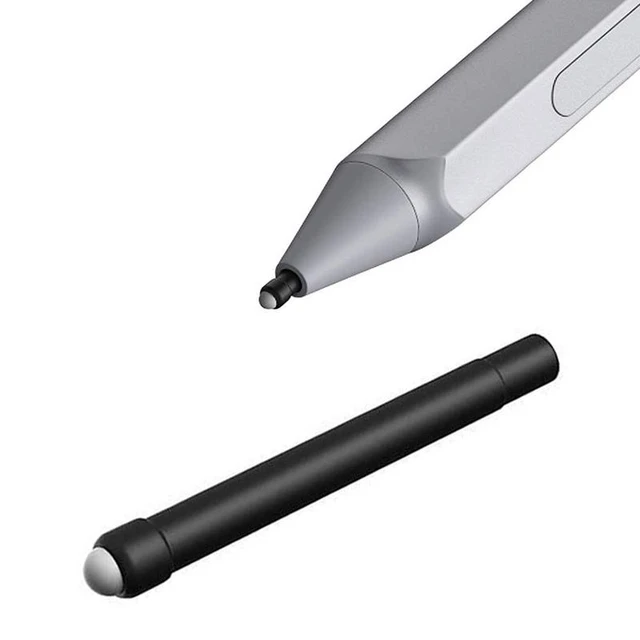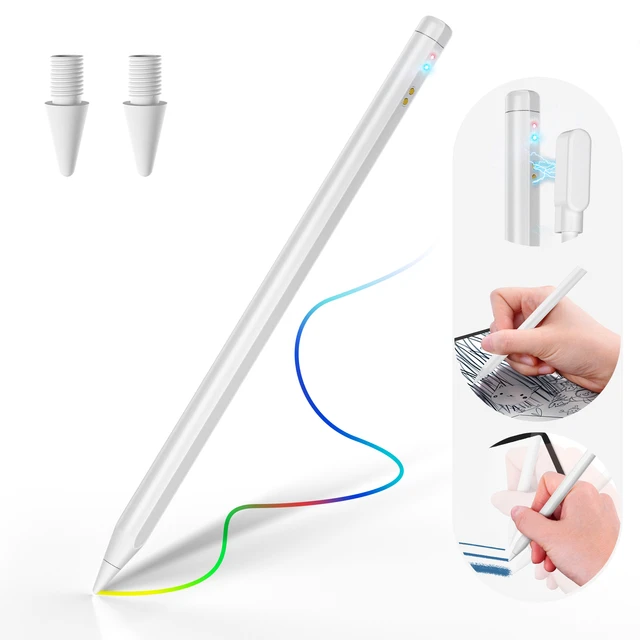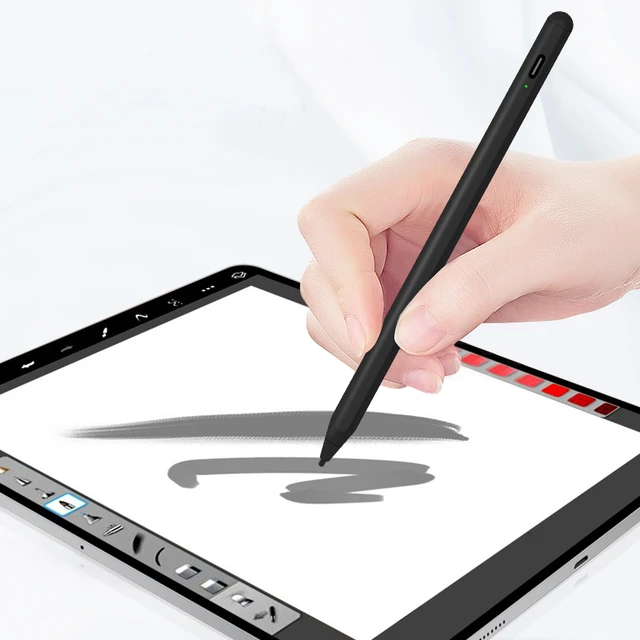 Introduction:
Introduction:
Stylus pens have gained popularity for their versatility and precision in digital input. These pens offer a seamless and accurate experience when interacting with touchscreens, making them valuable tools for work and learning. In this comprehensive guide, we will explore the classification of stylus pens, their role in work and learning environments, as well as the advantages and disadvantages they offer. By understanding these aspects, you can determine whether a stylus pen is suitable for your specific needs.
 Classification of Stylus Pens
Classification of Stylus Pens
Passive Stylus Pens:
Passive stylus pens do not require batteries or power sources to function.
They rely on the electrical charge from the device’s screen to register input, offering basic precision and functionality.
Active Stylus Pens:
Active stylus pens use internal power sources, such as batteries, to enhance functionality and performance.
They provide more advanced features like pressure sensitivity, tilt recognition, and customizable buttons.
Bluetooth-Enabled Stylus Pens:
Bluetooth-enabled stylus pens connect wirelessly to devices, providing additional features and functionality.
They can offer increased responsiveness, enhanced customization options, and integration with digital devices.
 Role of Stylus Pens in Work and Learning
Role of Stylus Pens in Work and Learning
Digital Note-Taking and Annotation:
Stylus pens are valuable tools for taking digital notes, allowing users to write and draw directly on electronic devices.
The ability to annotate documents and highlight important information enhances productivity and organization.
Digital Art and Design:
Stylus pens are widely used in graphic design, illustration, and digital art creation.
They offer precise control and mimic the experience of using traditional artistic tools, providing a platform for professional-grade work.
Presentations and Collaboration:
Stylus pens facilitate interactive presentations by allowing users to write on screens or annotate slides in real-time.
In collaborative settings, stylus pens allow for efficient communication and brainstorming on shared digital whiteboards or documents.
Precision and Detail-Oriented Tasks:
Stylus pens excel in tasks that require precision, such as photo editing, 3D modeling, or engineering design.
They enable accurate and nuanced input, improving the quality and efficiency of intricate projects.
Pros and Cons of Using Stylus Pens
Advantages of Stylus Pens:
Enhanced Precision: Stylus pens offer pinpoint accuracy, allowing for detailed and intricate digital interactions.
Natural Writing Experience: Stylus pens provide a more familiar writing experience on touchscreens, resembling pen or pencil on paper.
Expanded Functionality: Stylus pens with advanced features like pressure sensitivity enable artists and designers to create more expressive and nuanced artwork.
Reduced Smudging: Stylus pens minimize the risk of smudges and fingerprints on device screens, preserving clarity and visibility.
Disadvantages of Stylus Pens:
Learning Curve: Using a stylus pen may require some adjustment and practice to fully utilize its potential.
Expense: Stylus pens with advanced features can be pricier compared to basic passive versions.
Limited Compatibility: Some stylus pens are designed specifically for certain devices, limiting their cross-compatibility.
 Using a Stylus Pen with Ring and Blink Cameras
Using a Stylus Pen with Ring and Blink Cameras
Utilizing a stylus pen with Ring and Blink cameras can enhance your interaction with these devices. While these cameras do not have specific support for stylus pens, there are ways in which you can incorporate a stylus pen for greater control and precision.
On-Screen Navigation:
A stylus pen can provide more precise control and accuracy when navigating the touchscreen interface of Ring and Blink cameras. Use the stylus pen to tap and swipe on the touchscreen to access menus, settings, and recorded footage. This allows for easier and more accurate interaction compared to using your fingers.
Input Precision:
When using a stylus pen, you can achieve better precision in inputting commands or writing text on the touchscreen of the Ring or Blink camera. This can be particularly useful for typing in passwords or entering text for search queries or naming recorded videos.
Screen Protection:
Using a stylus pen instead of your fingers can help reduce fingerprint smudges and other marks on the touchscreen of the camera. This allows for clearer visibility of the display and improves the overall viewing experience.
Enhanced Comfort:
For individuals with larger fingers or those who prefer a more tactile experience, a stylus pen offers a more comfortable alternative for interacting with the touchscreen. The pen’s ergonomic design and grip provide a natural and comfortable writing or tapping experience.
Note-Taking and Annotations:
If the Ring or Blink camera supports note-taking or annotation features on its touchscreen interface, a stylus pen can be used for more precise and detailed input. This can be helpful for marking or highlighting specific areas of interest in recorded footage or for taking notes during playback.
Cleaning and Maintenance:
Additionally, a stylus pen can serve as a tool for cleaning and maintaining the cleanliness of the touchscreen on your Ring or Blink camera. The pen’s tip can be used to wipe away dust, debris, or smudges, ensuring a clear and responsive touchscreen.
While Ring and Blink cameras do not have specific compatibility for stylus pens, using a stylus pen can improve your interaction with these devices. A stylus pen allows for more precise on-screen navigation, enhances input precision, offers screen protection, and provides enhanced comfort during usage. Additionally, a stylus pen can be utilized for note-taking, annotations, and touchscreen cleaning. By incorporating a stylus pen, you can enhance your overall experience and interaction with Ring and Blink cameras.
Trends in Stylus Pen Usage
Increased Demand for Precision and Control:
With the growing popularity of digital art, note-taking, and precise input on touchscreen devices, there is a rising demand for stylus pens that offer enhanced precision and control. Manufacturers are developing stylus pens with finer tips and improved pressure sensitivity to cater to these needs.
Compatibility with a Wide Range of Devices:
Stylus pens are now being designed to work with a variety of devices, including smartphones, tablets, laptops, and even some smart TVs. Cross-platform compatibility is becoming crucial as users seek a single stylus pen that can be used across multiple devices and operating systems.
Integration of Advanced Features:
Stylus pens are incorporating advanced features to provide a more intuitive and versatile user experience. Some pens now include programmable buttons, pressure-sensitive functions, tilt support, and even customizable shortcuts. These features expand the creative possibilities and functionalities that can be accomplished with a stylus pen.
Hybrid Stylus Pens:
Hybrid stylus pens combine traditional pen functionality with touchscreen compatibility, offering a dual-purpose tool for both analog and digital tasks. They feature a stylus tip on one end for touchscreen use and a ballpoint pen on the other end for writing on paper. Hybrid pens provide seamless transitioning between digital and analog workflows.
Sustainable and Eco-Friendly Materials:
As environmental awareness continues to grow, there is a trend towards using sustainable and eco-friendly materials in stylus pen manufacturing. Companies are using recycled plastics, bamboo, or other renewable materials for pen bodies, reducing their environmental impact.
Design Focus on Comfort and Ergonomics:
Stylus pens are being designed with greater consideration for user comfort and ergonomics. Manufacturers are incorporating more ergonomic grips, balanced weight distribution, and pen shapes that mimic traditional writing utensils to improve overall comfort during extended usage.
Integration with Digital Assistants:
Some stylus pens are now being integrated with digital assistants, allowing users to rely on voice commands while using the stylus pen for precise input. This integration enhances productivity and efficiency by providing hands-free control in conjunction with touchscreen interaction.
 Conclusion:
Conclusion:
Stylus pens provide a valuable tool for digital work and learning environments. With their varying classifications, including passive, active, and Bluetooth-enabled, users can choose pens that align with their specific needs and preferences. Stylus pens play a significant role in digital note-taking, artistic creations, presentations, and precision-oriented tasks. The advantages of stylus pens, such as enhanced precision, a natural writing experience, expanded functionality, and reduced smudging, outweigh the disadvantages like a learning curve and potential expense. By understanding the benefits and drawbacks, you can determine if a stylus pen is a suitable addition to your work or learning toolkit, enabling greater creativity, productivity, and precision in the digital realm.


 Introduction:
Introduction: Uses and Applications of Stylus Pens
Uses and Applications of Stylus Pens Benefits of Using Stylus Pens
Benefits of Using Stylus Pens Conclusion:
Conclusion: